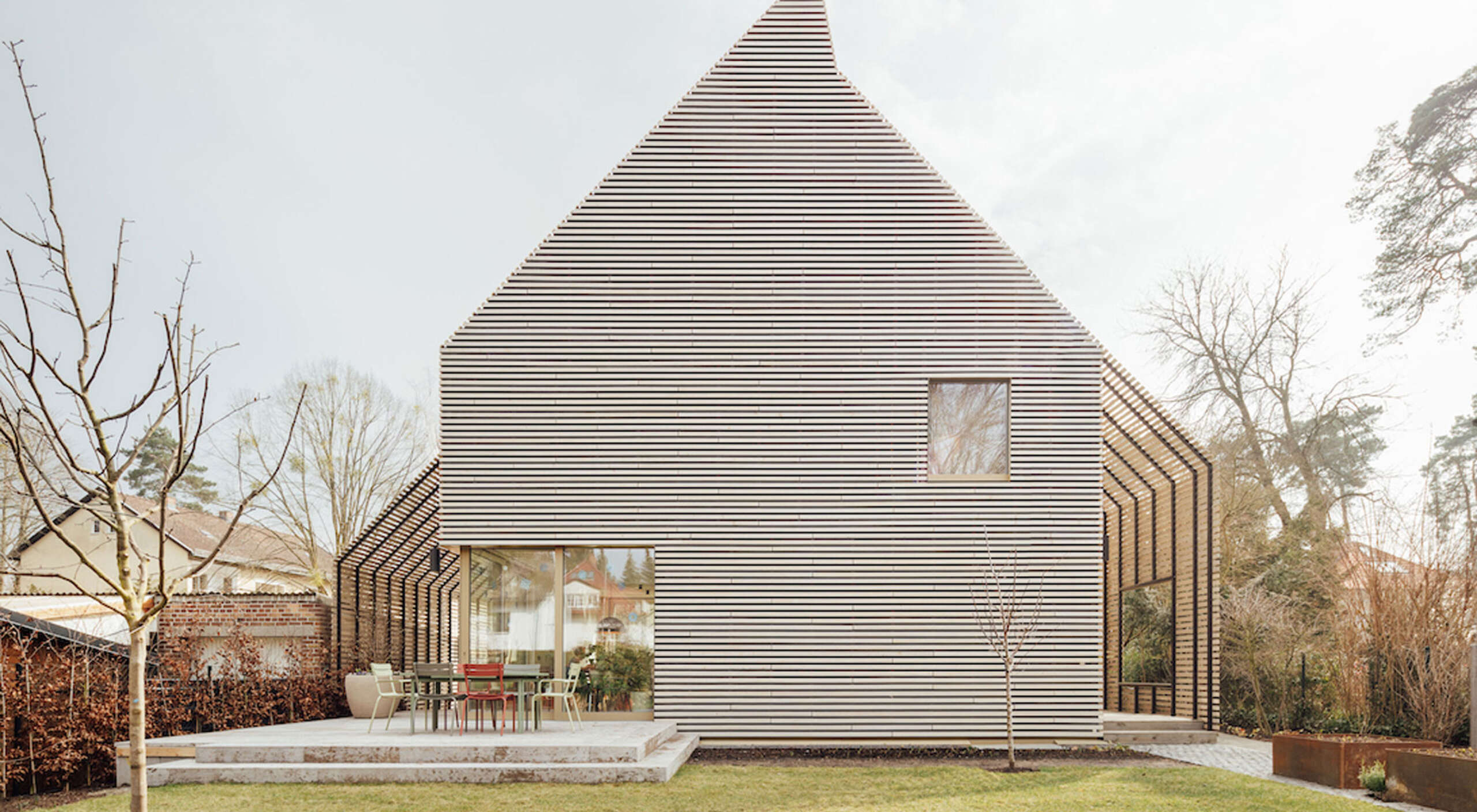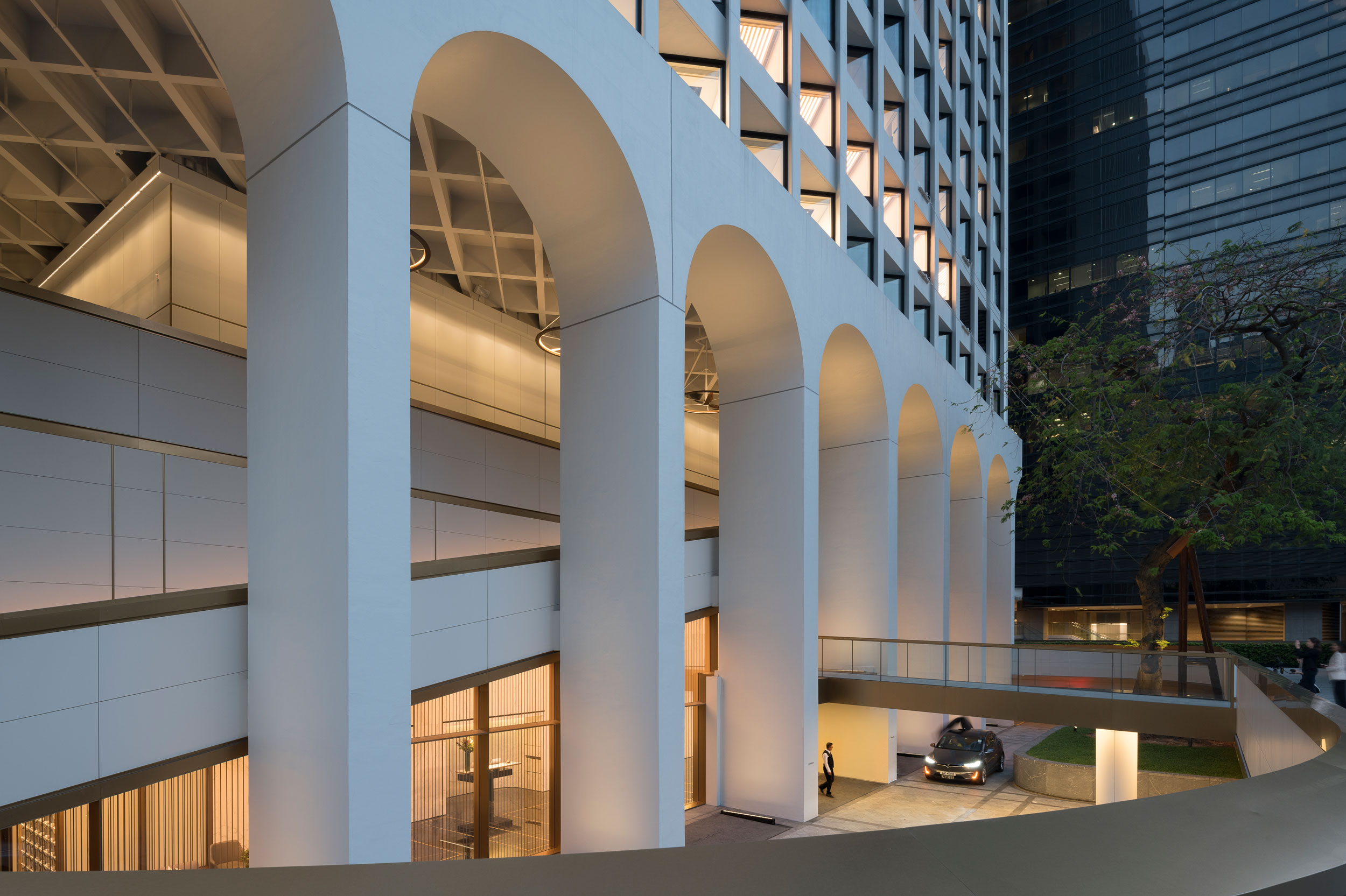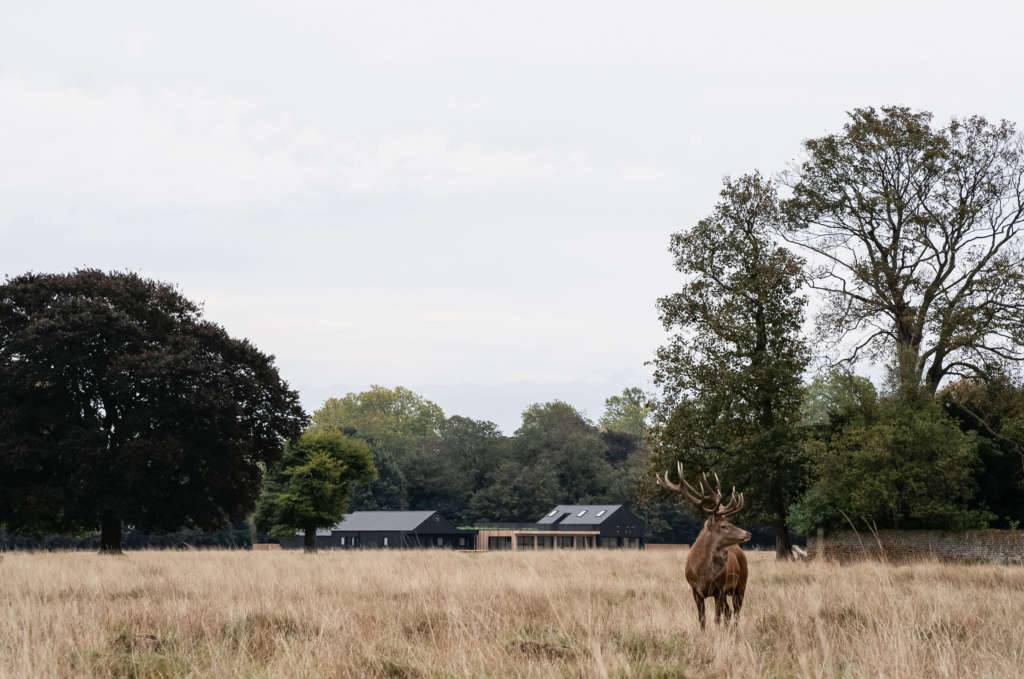
The following description is courtesy of Reed Watts Architects.
Reed Watts Architects have completed a new pavilion in Bushy Park, Richmond Upon Thames for Teddington Cricket Club. The 600m2 structure was built in just seven months in the Grade 1 listed park and provides a new home for the club as well as sport and leisure facilities for the local community.
A highly successful amateur cricket team, Teddington Cricket Club has been based on the site in Bushy Park since 1863. Their previous clubhouse was formed from two Nissen huts which dated back to the Second World War when Bushy Park was used as a headquarters from which Operation Overlord (D-Day) was planned. The club was in urgent need for new facilities to replace the aging timber structure and poorly organised accommodation of their existing building.
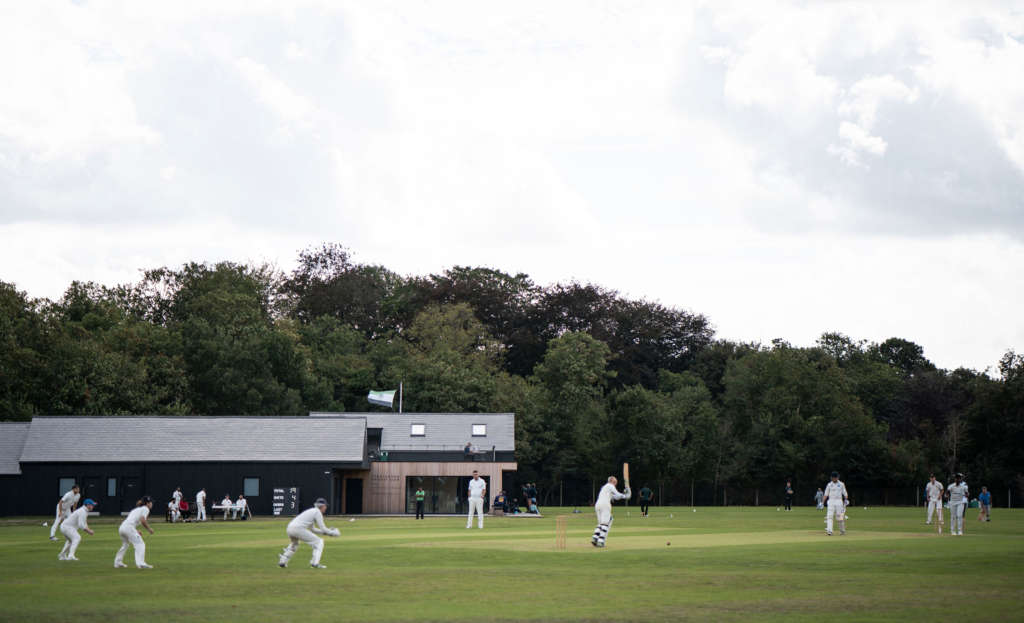

© Ben Tynegate 
© Ben Tynegate
Reed Watts’s designs re-imagine the typical sports pavilion typology with a building that responds positively to the park setting, whilst referencing the form of the previous Nissen huts. The new pavilion includes four new changing rooms, two large social spaces and a roof terrace with the ‘L’ shaped plan providing views over both of the team’s pitches and across the park, whilst shielding the back of house areas and the practise nets from the public.
The landscape of Bushy Park heavily influenced the design with the building’s low form – a discreet presence beneath the mature trees that line the boundary of the park. The calm material palette was similarly chosen to blend into its surroundings. The majority of the cladding in dark stained larch, while the central block has a natural finish which instantly beds into the natural landscape but will further soften with age.
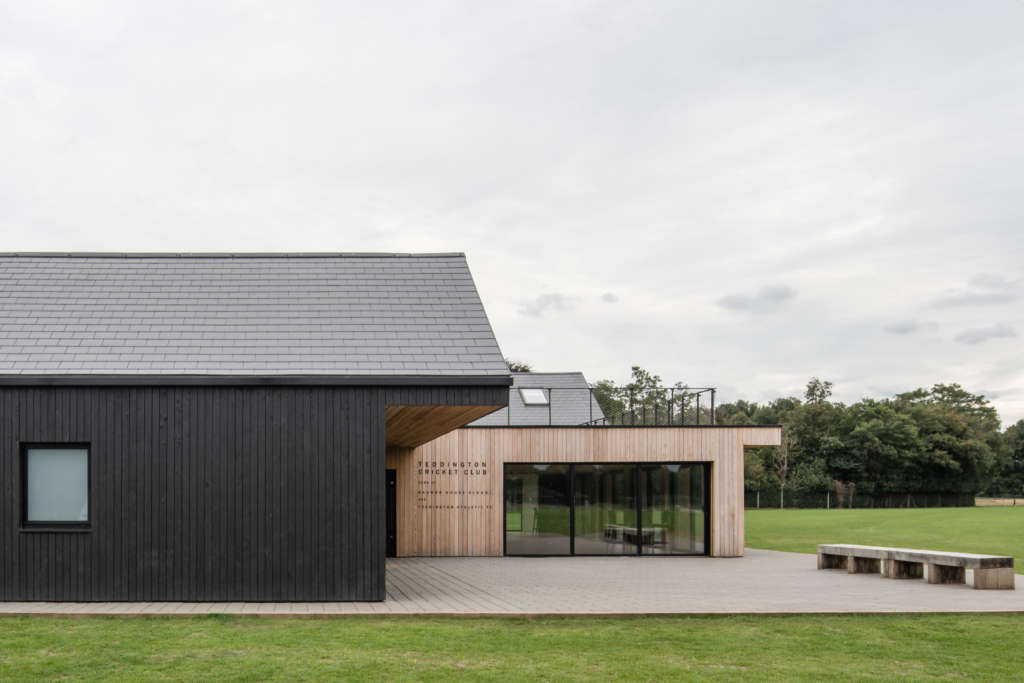
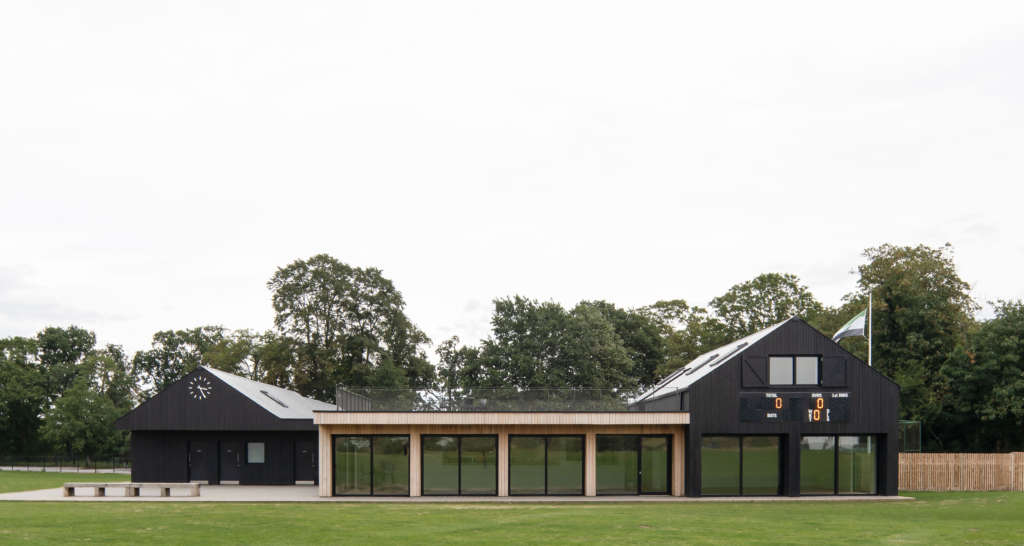
The primary structure is constructed from a SIP’s timber panel system. This lightweight structure was erected quickly and required relatively small foundations, minimising its impact on the ground and disturbance to the deer and visitors to the park as well as wildlife in the adjacent SSSI (Site of Special Scientific Interest).
At ground level the new space is split into two distinct zones. Four team changing rooms and an official’s changing room, to English Cricket Board (ECB) standards and fully accessible, are located along the northern edge. The main block facing the pitches includes an open plan bar/ clubroom which can be subdivided when required.
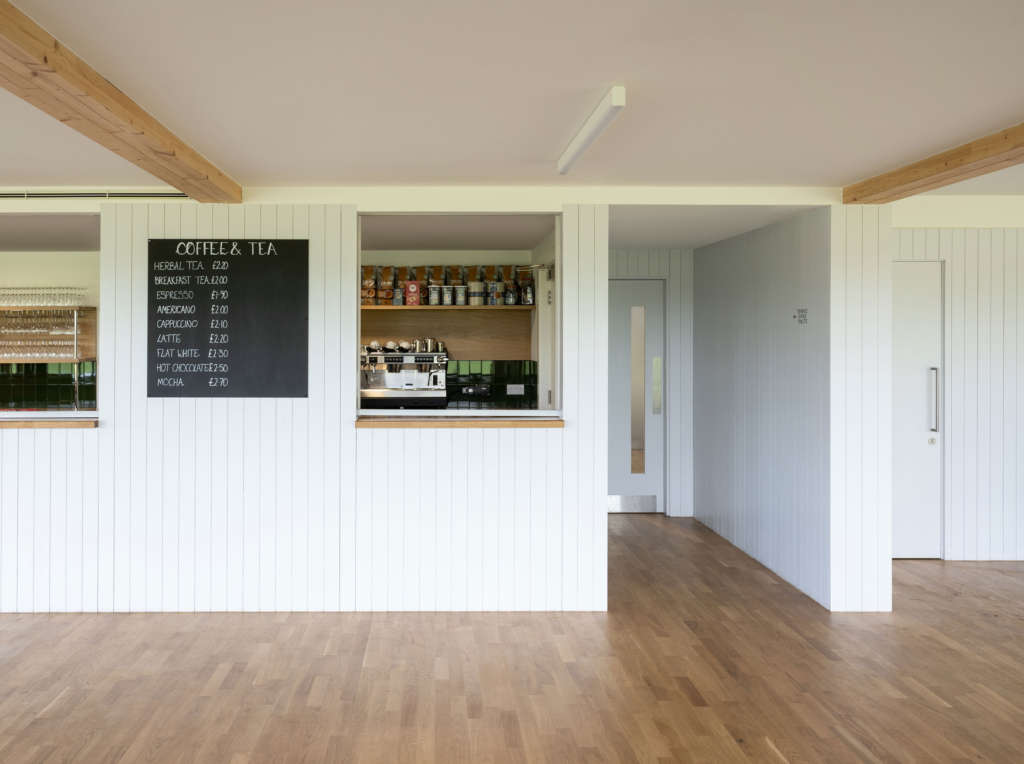
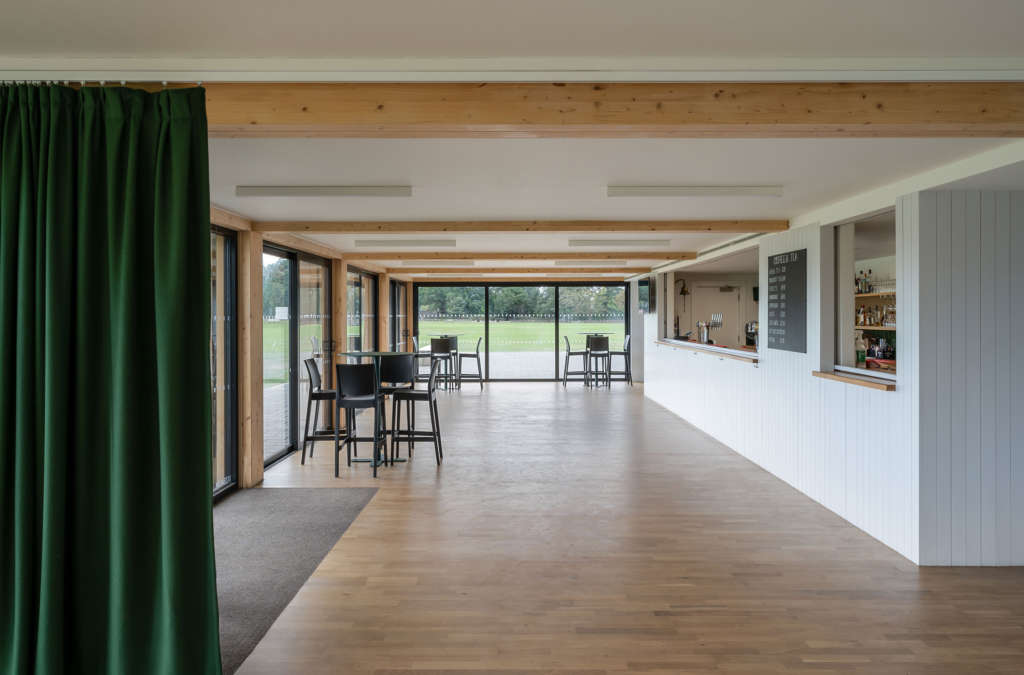
Tucked between pitched roofs, a new roof terrace affords panoramic views of the cricket pitches and the landscape beyond, and provides an elevated stage for the club to host outdoor events. Behind the terrace is a generous wildflower green roof that contributes to the site’s biodiversity and attenuates rainwater. The club office and scorer’s box is also located at this raised level.
One of the key strategic ambitions of the project was to reduce the need for visitors to drive through the park to reach the club. To achieve this Reed Watts proposed a new entrance be created into the park, through the listed masonry boundary wall, to give direct access to the site for the first time, making the park and cricket grounds free from traffic and cleaner and greener for all.
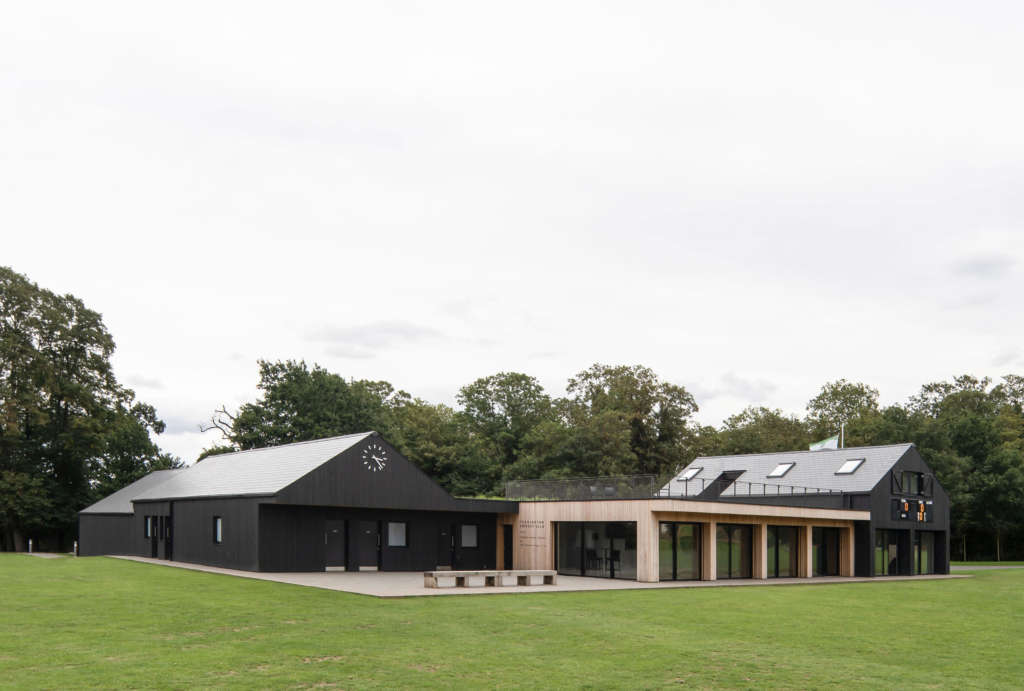
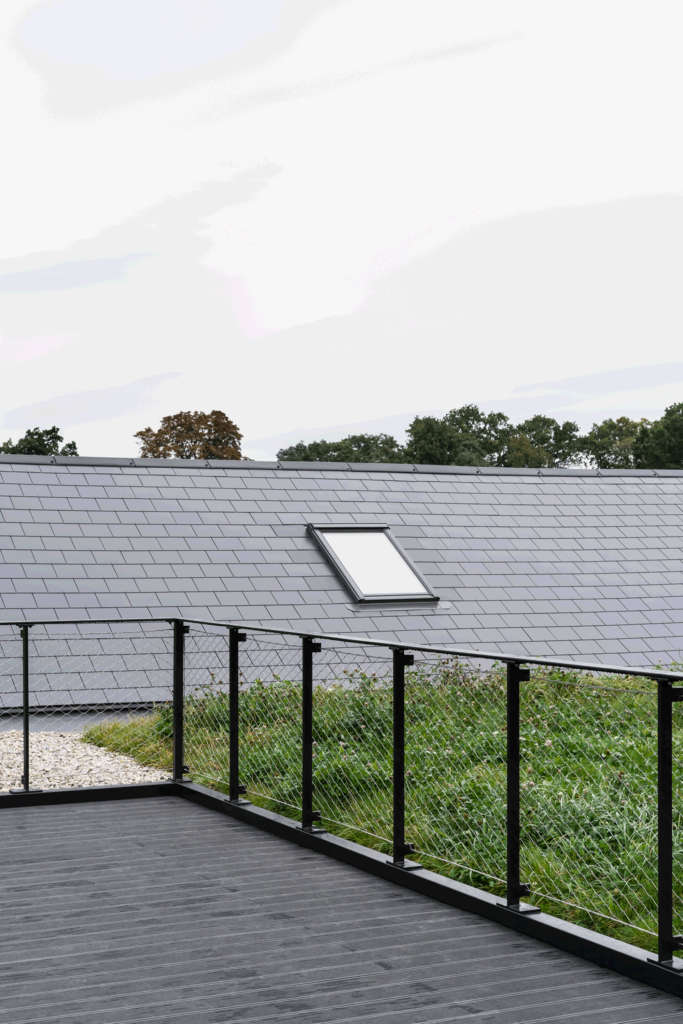
Sustainability was integral to all design decisions. The highly energy efficient structure is set to attain BREEAM ‘Excellent’ accreditation, a challenging target for a relatively small community building, significantly distanced from transport and facilities. Environmental features include a ground source heat pump, a 28,000 litre water tank to help irrigate the pitches, and mechanical heat recovery throughout.
The pavilion is an important community resource. As well as TCC, the building is home to Radnor House School sports teams, Teddington Athletic Football Club and a number of other local sports groups meaning it will be used throughout the year, not just the summer cricket season.
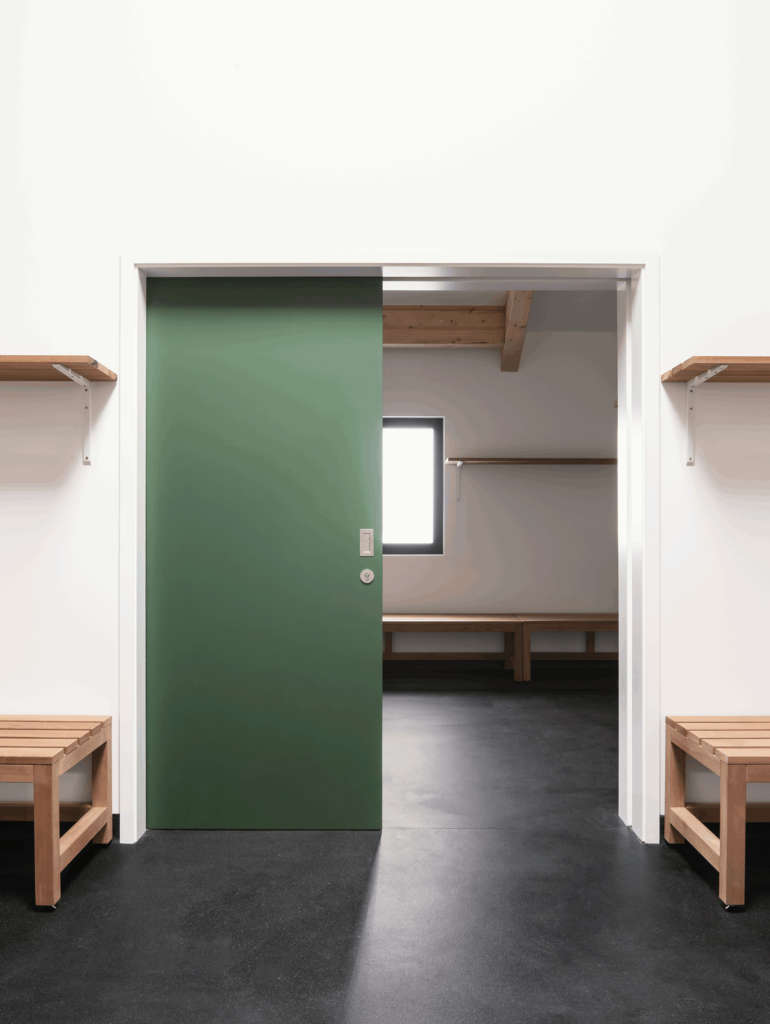
Given the sensitive nature of the site, extensive consultation was required by Reed Watts with the Borough of Richmond upon Thames, Royal Parks, Historic and Natural England, and local stakeholders to secure planning permission and conservation area consent.
Matt Rees, Committee Chair, Teddington Cricket Club: Reed Watts have been a patient partner throughout the process, helping us from the outset to build our brief and giving us the confidence to challenge our preconceptions of what a clubhouse should be. We are extremely proud of our new home which will be used all year round by our stakeholders for sport and recreation in the local community for generations to come.
Jim Reed, Reed Watts Architects: We are incredibly proud to have helped Teddington Cricket Club achieve their ambitious plan to provide a first-class venue in Bushy Park to match the quality of their cricket. While the layout is a focused functional response to the complex brief, the form is inspired by the memory of previous pavilions on the site. As a local resident it is fantastic to contribute as an architect to the community with a building that references the past whilst confidently looking forward to the future.
Project Details
- Location: Bushy Park, Teddington
- Type of project: Cricket Pavilion
- Client: Teddington Cricket Club
- Architect: Reed Watts Architects
- Project Manager/ CA: Peter Lawrence, Stallworthy
- Landscape architect: Colvin & Moggeridge
- Planning advisor: Reed Watts Architects
- Structural engineer: Evolve
- M&E consultant: Baystar
- Quantity surveyor: Peter Lawrence, Stallworthy
- Principal Designer: Reed Watts Architects
- BREEAM consultant: JAW
- Ecology: LUC
- Arboriculture: Canopy Consultancy
- Main contractor: GPF Lewis
- Funding: Private/ Club
- Start on site date: January 2019
- Completion date: September 2019
- Contract duration: 8 months
- Internal floor area: 600m2
- Form of procurement: Design & Build (JCT)
- Construction cost: £1.7m




